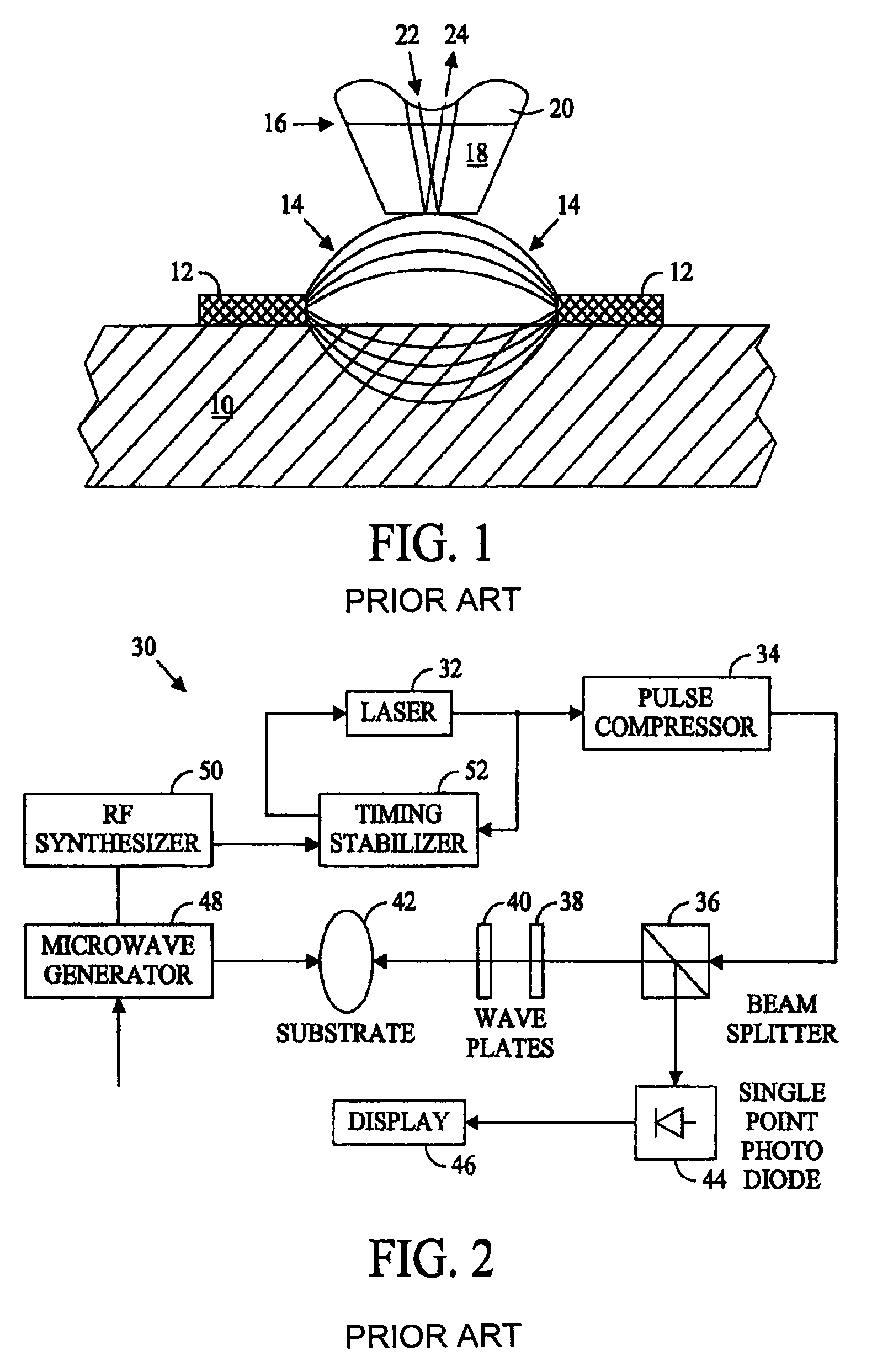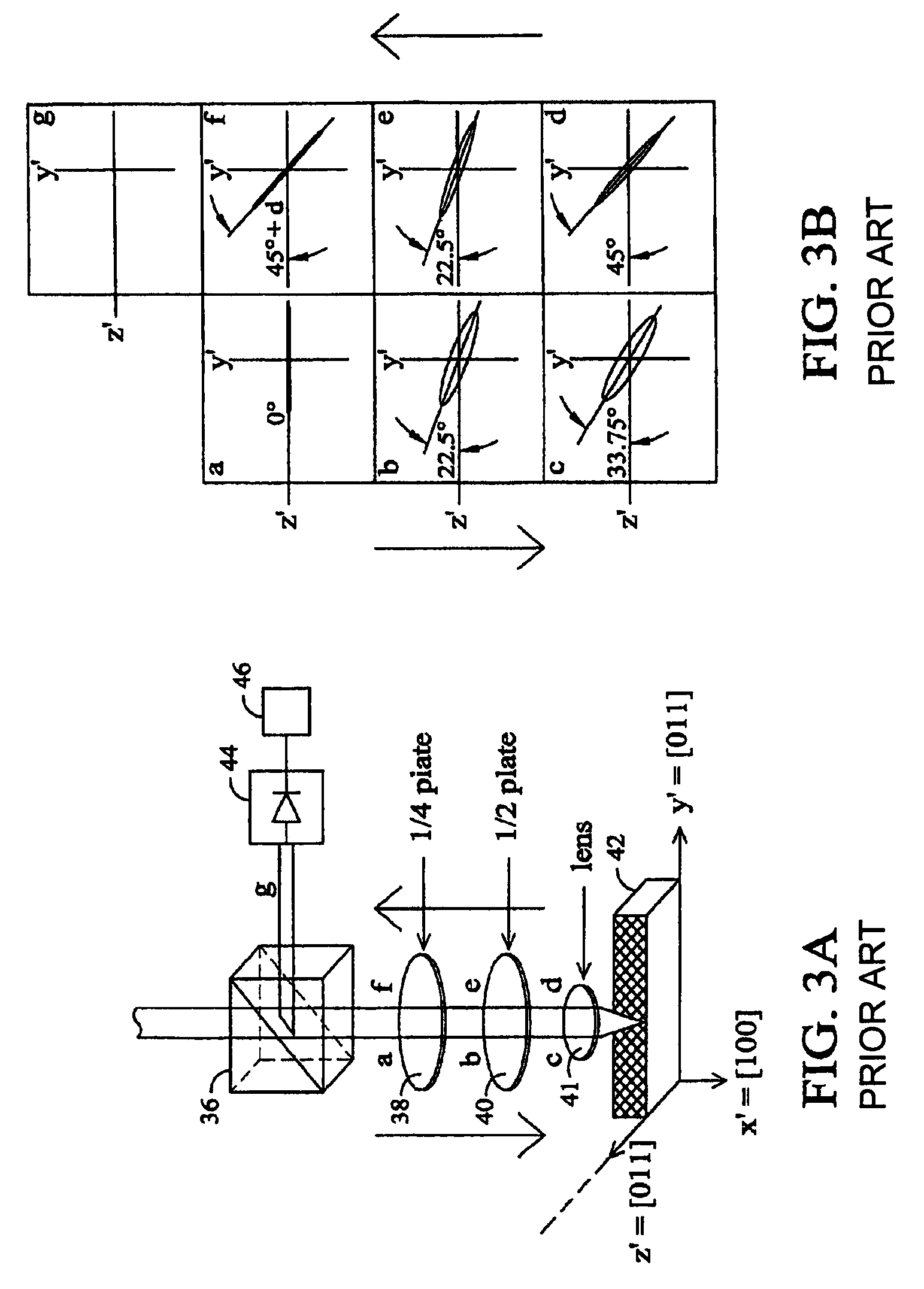Method for optically testing semiconductor devices
a semiconductor device and optical testing technology, applied in semiconductor/solid-state device testing/measurement, instruments, material analysis, etc., can solve the problems of limiting the effective use of low-frequency external input or output circuit responses, electrical probes suffering from measurement dilemmas, and the characteristic impedance of such lines restricting the use of input/output connections
- Summary
- Abstract
- Description
- Claims
- Application Information
AI Technical Summary
Benefits of technology
Problems solved by technology
Method used
Image
Examples
Embodiment Construction
[0020]The present inventors came to the realization that the single point non-invasive probing technique of semiconductor materials could be enhanced if an area significantly greater than a wavelength of the optical test signal could be transmitted through or reflected off of a semiconductor material. Semiconductor materials generally exhibit electro-optic or photo-refractive effects, which can be made to become birefringent by the application of an electric field, either as such or as embodied in electromagnetic radiation. The present inventors then came to the realization that if an object in a state in which it is not birefringent, but such birefringence can then be brought about by electrical or electromagnetic techniques, the nature of the birefringence so introduced can be studied to determine characteristics of the material. Upon further consideration the present inventors then came to the realization that interferometry techniques can sense a wide region, such as that passin...
PUM
| Property | Measurement | Unit |
|---|---|---|
| frequencies | aaaaa | aaaaa |
| time resolution | aaaaa | aaaaa |
| holographic optical interference | aaaaa | aaaaa |
Abstract
Description
Claims
Application Information
 Login to View More
Login to View More - R&D
- Intellectual Property
- Life Sciences
- Materials
- Tech Scout
- Unparalleled Data Quality
- Higher Quality Content
- 60% Fewer Hallucinations
Browse by: Latest US Patents, China's latest patents, Technical Efficacy Thesaurus, Application Domain, Technology Topic, Popular Technical Reports.
© 2025 PatSnap. All rights reserved.Legal|Privacy policy|Modern Slavery Act Transparency Statement|Sitemap|About US| Contact US: help@patsnap.com



